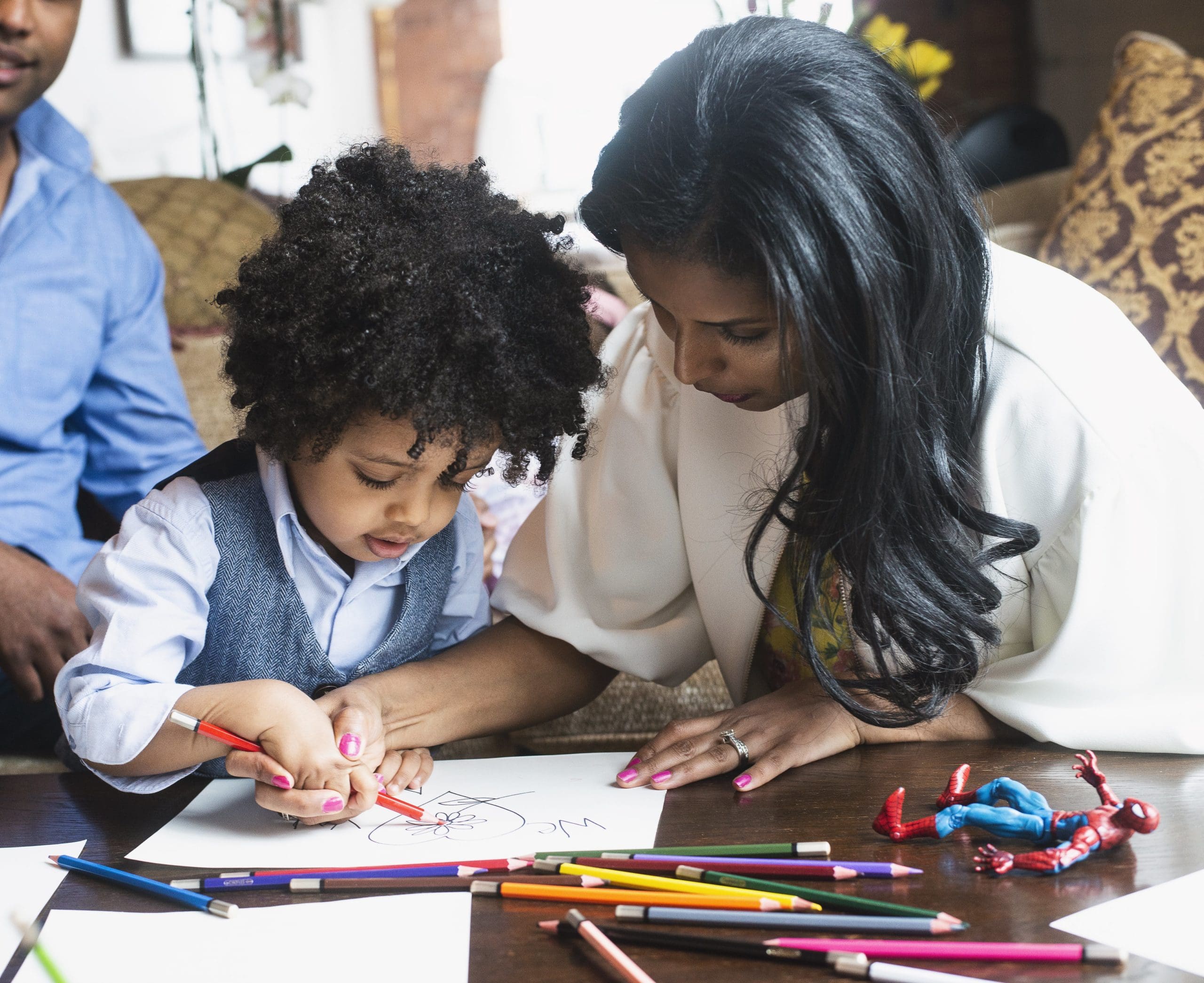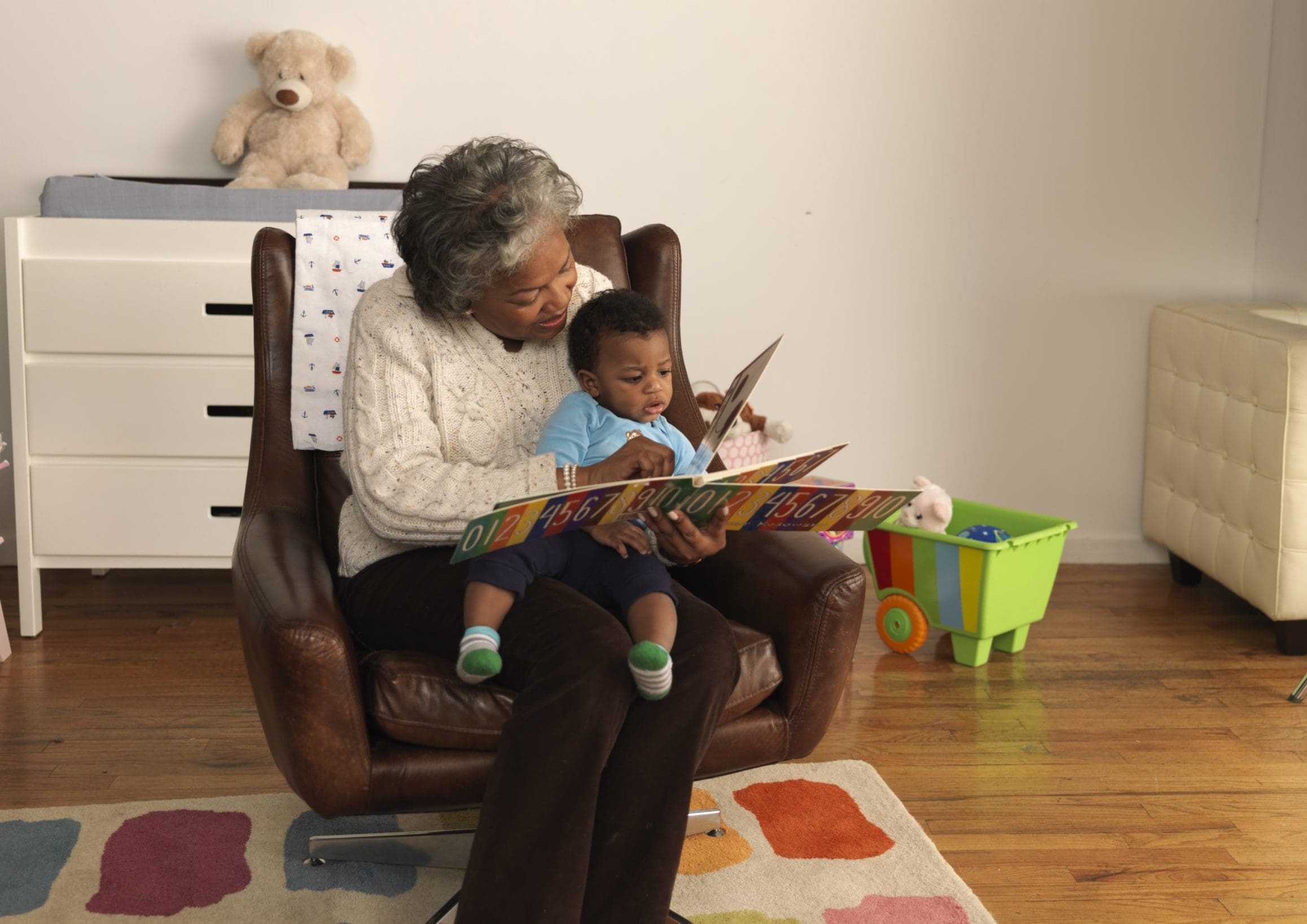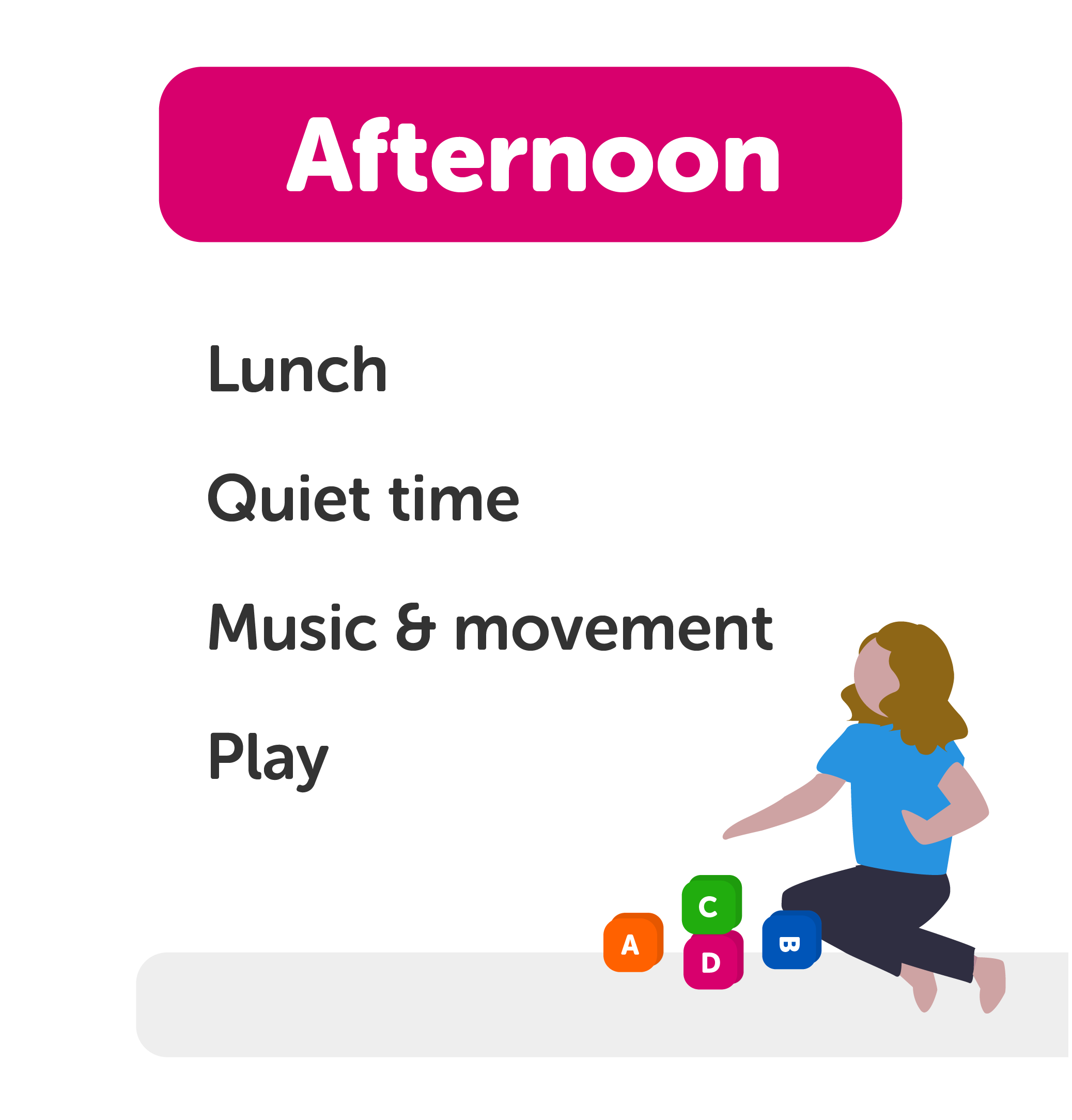 In partnership with the New York City Department of Education
In partnership with the New York City Department of Education
As we start the new school year, we hope this page can help answer the common question, “Where do I start?” This easy-to-use page features a collection of resources we love for families with young kids—chosen by the NYC Division of Early Childhood Education. Discover learning tips and activities, health support, and more on the topics you care about. Come back every two weeks to find a new featured resource!
Home to school transition strategies
As your child starts a new school year, remember that separation is a process. You and your child will need some time to get used to a new setting, and new routines and situations.
-
Toileting
- Find out about the toileting procedures at the new school/program so you can review the situation and plan accordingly with your child and make sure they are comfortable.
-
Routines
- Your family routines may change. One tip to help your child prepare is to use household materials to make a book about their new routine. For example, you can take or draw photos of your child in front of their new school and add text like, “This is Pilar at school. This is her favorite t-shirt. This is Pilar playing and learning with her friends. This is Mommy picking up Pilar when school is over.”
-
Familiar Objects
- Bringing a familiar object from home may be comforting and promote a sense of safety for children. Work with your child on picking an object such as a stuffed animal, a blanket, or a toy that doesn’t make noise. You can also explain that when they feel like they miss you or home, they can hug the object as hard as they want.
-
Share your experiences
- Tell stories about when you went to school and share how you felt about it, “I was nervous at first, but my teacher helped me make new friends.” If available, share or draw childhood pictures of yourself and other adults in your child’s life going through transitions, and talk about the feelings you and others had.
Featured right now
To help you navigate everything out there, here’s a trusted resource to offer support. We’ll highlight a different resource every two weeks in this spot, so check back for a new feature often!
Public television for learning
WNET Let’s Learn NYC
Watch remote learning classes for grades 3K–2 taught by NYCDOE professionals. One-hour lessons include literacy, math, music, movement, science, and social studies.
Why we love this!
It’s TV but educational!
Previously featured resources
A list of our previously listed favorite resources you can access anytime.
-
Learn at home resources
- Parent University is a one-stop-shop where NYC families can find free trainings on a range of topics, including adult education, social-emotional learning, and special education. Parent University empowers families as partners in learning through free courses, resources, events, and activities. It serves all families, from early childhood through adulthood.
- Need fresh ideas for learning at home? Find resources for parents, caregivers, and teachers to support distance learning on Wide Open School. This resource includes topics on equity and social justice, learning and thinking differences, family services, and more.
- On Zero to Three, a trusted name in early childhood education, you'll find a range of resources to help you support and nurture your young child at home. The website includes activities for play, information on brain development, guidance for challenging behaviors, and much more.
-
Let's Play! is a public television program created by and starring New York City educators. It features lessons for children ages 3-8 that can add to remote and blended learning. Lessons focus on literacy, math, science, social studies, and the arts. The series also supports social-emotional learning, and brings families on virtual field trips to watch dance performances, meet animals, visit botanical gardens, and more.
New episodes are available now! Episodes air weekdays at 9 am on Channel 21 WLIW, 11 am on Channel 13 WNET, and are available to stream at any time at letslearn.org.
- Shelf help is the New York Public Library’s (NYPL) new personalized book selection service! Tell them your reading interests and they’ll pick five books for you. Fill out the online form, call 917-ASK-NYPL, or get a request form at a grab-and-go location to get new reads handpicked for you.
-
Mental Health
- New Yorkers can access a range of mental health services by phone or online. If you or someone you care about needs support, we encourage you to reach out to the programs on the ThriveNYC website. Help is available.
- The City of New York offers a range of free, easy-to-use mental health resources. Text, call, or chat NYC Well to learn different ways to cope with stress, anxiety, depression, and substance use. Services are available at any time, any day, and in over 200 languages. It's a good place to start if you're looking for help.
Learning support
This school year, your family may experience a lot of transitions and changes to the routines you put in place over the past year.
Change can be exciting, but can also be challenging. In this section, you can find resources to support with the transitions you will experience as a family. This includes learning tips, virtual and in-person activities and events, and other helpful resources for families of young children.

Learning resources
Early Childhood Family Resources
A NYC Department of Education (NYCDOE) homepage for families with activity suggestions and resources for infants, toddlers, and children 3–4 years old.
Preparing your child for preschool: Learn best practices for preparing your child for preschool from PBS, and sign up for the PBS Kids newsletter for activities and parenting tips emailed to you every week.
Find best practices
NYCDOE Guide to the Early Intervention to Preschool Transition
A guide to help families become familiar with the transition from Early Intervention to Preschool Special Education.
Ready4K
A free resource for helping your child stay on track with their learning goals. To get three texts per week to support your child’s growth, text “NYC” to 70138 or fill out this form.
Office of Homeschooling
Find answers to your questions about homeschooling your child on the Office of Home Schooling website.
Play and Learn at Home
Check out the DOE’s at-home learning guides to supplement your child’s learning. View weekly read aloud and activity suggestions that align with your child’s curriculum. Download this new Let’s Play at Home guide for families with children attending Family Child Care programs. And have some fun with these Family Bingo cards!
Sesame Street in Communities
Sesame Workshop offers information, videos, and activities in English and Spanish on a wide range of health, literacy, STEM, and other topics.
WNET Let’s Learn NYC!
Watch remote learning classes for grades 3K–2 taught by NYCDOE professionals. One-hour lessons include literacy, math, music, movement, science, and social studies.
Vroom
Tips, tools, and 1000+ activities to help you add learning to meal time, bath time, bed time, or anytime. Visit Vroom.org to access the tips, download the app from the App Store or Google Play, or see a selection of tips in our Brain Building section.
See what your child is learning
This activity gives your child the opportunity to hear new words, which builds their vocabulary. Measuring involves counting, which will help them with math in the future. Having a conversation about the experience helps them develop their communication skills.
![]()
Keeping daily routines
During this time, your child’s routines may change. You can help them by following a predictable routine so they feel safe and know what’s expected of them. Routines can help you and your child move confidently through the day and encourage positive behavior. It can also make your child feel safe and secure.
When creating a new routine with your child, be flexible and open to their needs and incorporate your child into the decision making. Afterall, you know your child best! Find a balance of routines and flexibility that works for your child in and out of school.

Talking to children about routines
Remind your child:
- They are safe
- Where they will be that day
- Who will be taking care of them that day
- When they can expect to see you again
You can also talk with your child about your own grown-up routines, and things that may be unexpected. Talk openly and honestly about what to expect, and let your child know that you love and care for them—even if you’re not there. This helps them feel safe and secure.
Daily routine considerations
Get started by asking yourself, “What are the things that we need to do every day?” A schedule at home may look like:



Adults thrive on routines, too
Make sure you build in self-care practices everyday, like staying connected with others (even from afar). Routines can provide a sense of security, help reduce anxiety, and build resiliency in adults and children alike!
Mental health
These are challenging times for adults and children. It’s important to think about how children are feeling, as well as ourselves.

Your child’s emotions
Here are some tips to help your child learn about their emotions:
- Communicate to your child that their feelings are valid.
- Help them begin to understand feeling words, such as happy, sad, frustrated and scared by naming the emotion for them. For example, “It looks like you are excited! I wonder what you are so excited about.”
- Teach them how they can express feelings. Consider saying “It looks like you are feeling really angry. When you feel angry you can push on the wall ” or “It looks like you are feeling sad. When you feel sad you can ask for a hug or get your favorite toy.”
To learn more about feelings, check out these NYCDOE online resources. Use the Fun with Feelings cards to help 4-year-olds identify and talk about feelings at home, and watch the videos “How Can I Use Fun with Feelings?” and Why Is it Important to Learn About Feelings.
Tips for taking care of yourself
When you take time to care for yourself, can take care for your child better. Even a few minutes of “you time” (like taking deep breaths or listening to a song) can help you recharge so that you can be your best. Here are some tips for creating “you time”:
- Listen to music as you’re doing chores around the house
- Set an alarm to remind yourself to pause, take a deep breath, or use a calming meditation app
- Make sure you’re getting enough sleep (when your little one lays down to rest, try to do the same!)
- Take a ten-minute vacation, like soaking your hands in warm water as you’re bathing your child
- Keep a favorite family photo with you to remind you of happy times in hards moments
- Reach out to others when you’re feeling alone—you don’t have to handle these feelings on your own!